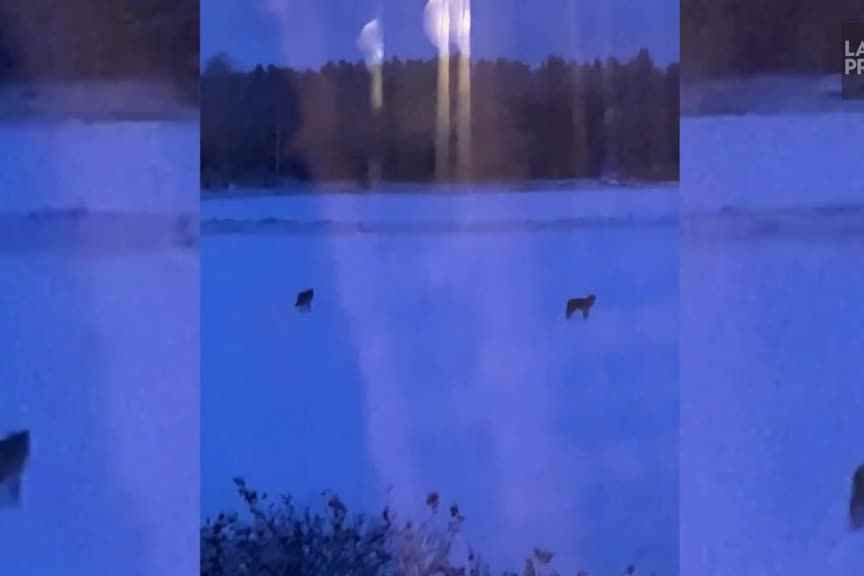(Västerås) Lars Björk shows predator tracks in the snow, in a white-stained forest. In this corner of central Sweden, as in much of the country, a wolf hunt, the largest in recent times, is taking place with the greatest controversy.
“We have a lot of wolves here,” this carnivore specialist from the Swedish Federation of Hunters told AFP.
“We are actually in new wolf territory, exactly where we are right now,” he says, settling in a small hunting cabin a few kilometers from the city of Västerås.
This year, Sweden has allowed hunters to kill 75, more than double last season, out of a population estimated at 460 individuals by the environmental authority.
An unprecedented level since wolf hunting was reauthorized in 2010 in the kingdom, as a result of the return of the canine, exterminated to near disappearance in the 20th century.
Since the opening of the hunt on 1er January, about fifty specimens were killed, and the quota will probably not be reached before the closing of February 15.
How can a country that has shown its concern for the environment for decades authorize the hunting of a species that it itself classifies as “highly endangered”?
The debate rages between pro and anti, in a country where hunting brings moose, deer and even bear meat to the dinner table.
“The goal is simply to limit the problems it causes in more rural areas,” pleads Lars Björk.
Long considered a plague, as elsewhere in Europe, the Swedish wolf was the subject until the middle of the last century of state bonuses for each animal killed.
Protected since the 1960s, it began to reappear in the following years, with an acceleration since the 1990s.
Breeders, worried about attacks on their animals – mainly sheep, but also reindeer in the north – or even owners of hunting dogs are the biggest advocates of wolf hunting.
Brown bears, lynxes and wolverines, although they are also classified as threatened, have also had hunting quotas for years.
“It’s incredible that Sweden continues to make such decisions”, storm Marie Stegard Lind, vice-president of the association “Jaktkritikerna” (“Critics of the hunt”).
EU Disclaimer
These hunts continue “although the European Commission has been very clear that these hunts are in fact illegal”, she said from her office in Stockholm.
Opponents of hunting argue that wolves are necessary for biodiversity, playing their role as predators of other species.
In 2015, Brussels warned that Swedish wolf hunting violated the European Habitats Directive, judging that the animal’s population “had not reached the level guaranteeing the conservation of the species”.
While Sweden exercises the presidency of the EU until June, the question divides in several other Member States, including France, between those who defend the rise of the wolf in the name of biodiversity, and those who call to protect European herds.
For Kjell-Arne Ottosson, a member of the Christian Democratic party member of the ruling coalition, the Nordic country is right to resist calls to order from Europe.
“Wolves are a threat to those of us who live in rural areas. We have to manage this, and seriously, ”he insists without hiding his annoyance.
The only fatal wolf attack on humans since its reappearance was in 2012. A keeper was killed by a wolf in captivity at Kolmården Wildlife Park, two hours south of Stockholm.
The acceptable number of wolves is the subject of endless debate.
The environmental agency estimates that at least 300 are needed to ensure a healthy population, scientists suggest 500 or a thousand, and Parliament has set a ceiling at 270. As for the hunting federation, it is asking for 150.
Currently, the animals are mainly present in the center and west of the country.
“The wolf has its place here, absolutely,” says Björk. “But not with the current number and concentrations,” he says.
